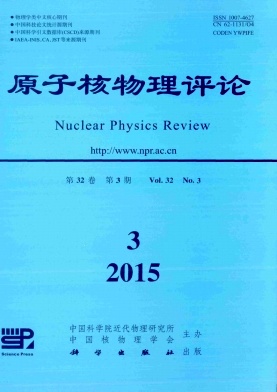Effect of Symmetry Energy in Reaction Ca+Ca at Intermediate Energies
doi: 10.11804/NuclPhysRev.32.03.259
- Received Date: 1900-01-01
- Rev Recd Date: 1900-01-01
- Publish Date: 2015-09-20
Abstract: A two-step model for combining the dynamical and statistical decay processes in heavy-ion collisions is used to reproduce the experimental results of the INDRA Collaborations on 40Ca+40Ca and 48Ca+48Ca reactions at 35 AMeV. We obtain the isoscaling parameters α(Z) and β(N) of isotopic distributions of the fragments, the reduced symmetry energy coefficient ζ(Z) and its dependence on the symmetry energy strength coefficient Cs in the mean field. Our results suggest that Isoscaling parameters strongly depend on the degree of neutron-rich. With the increasing atomic number, ζ(Z) represents a smoothly flat tendency during the dynamical process but shows the increasing tendency after decay, and such results are independent on the selected reaction systems. The effect of symmetry energy shows evidently in the isotopic distributions of fragments after statistical decay process.
| Citation: | AN Rong, YAN Shiwei, . Effect of Symmetry Energy in Reaction Ca+Ca at Intermediate Energies[J]. Nuclear Physics Review, 2015, 32(3): 259-266. doi: 10.11804/NuclPhysRev.32.03.259 |






 甘公网安备 62010202000723号
甘公网安备 62010202000723号 DownLoad:
DownLoad: